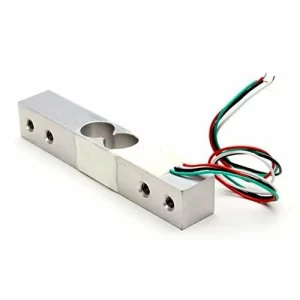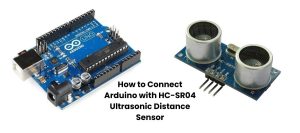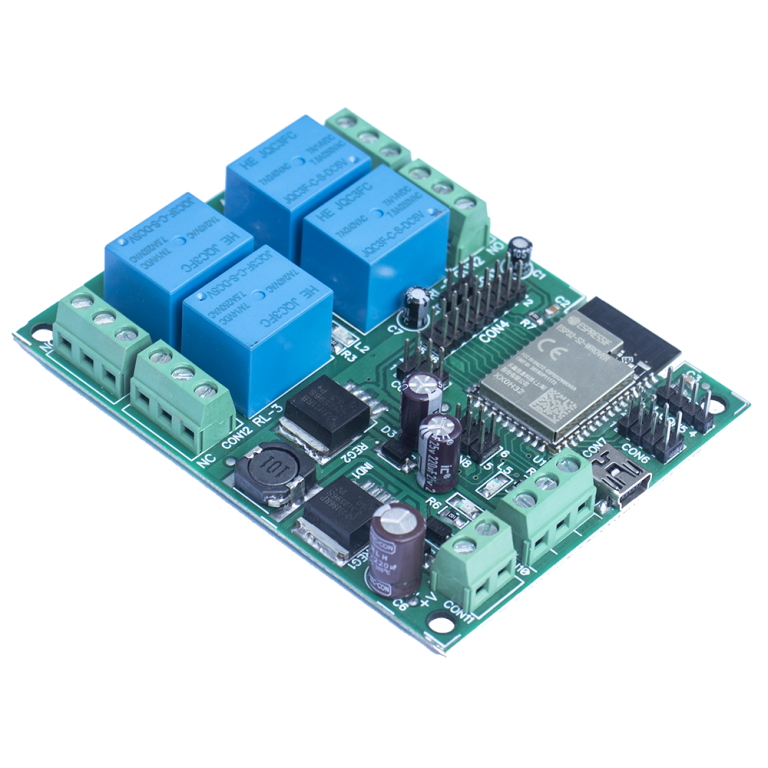Pressure sensors, those electronic marvels adept at converting pressure into electrical signals, play a pivotal role across diverse domains, ranging from automotive and medical sectors to industrial setups and everyday consumer gadgets. In this comprehensive guide, we embark on a journey to unravel the intricacies of pressure sensors, delving into their types, functionality, applications, and more.
How Do Pressure Sensors Work?
At the heart of pressure sensors lies the art of transforming pressure into an electrical language. The ubiquitous strain gauge is a key player in this symphony, a mechanical wizard enabling subtle expansions and contractions in response to applied or relieved pressure. These minute deformations are meticulously measured and calibrated to reveal the exact pressure on a piece of equipment or within a tank. The sensor then translates these variations into discernible voltages, or electric signals.
Another luminary in the pressure sensor realm is the piezoelectric pressure sensor. Harnessing the piezoelectric effect, materials like quartz, tourmaline, and barium titanate generate an electrical charge proportional to the applied pressure. It’s a dance of materials and forces, elegantly converting external pressure into a measurable electrical response.
Unveiling the Diverse Types of Pressure Sensors
Pressure sensors, integral electronic devices in various industries, play a pivotal role in measuring pressure and converting it into electrical signals. The market offers a diverse array of pressure sensors, each classified based on several parameters, such as pressure measurement type, sensing principles, output signal, media compatibility, MEMS technology, and mounting methods. Below, we delve into some of the most common types of pressure sensors:
1. Strain Gauge Pressure Sensors
Utilizing a strain gauge, this prevalent type of pressure sensor allows small expansions and contractions in response to applied or relieved pressure. By measuring and calibrating physical deformations, it reveals the precise pressure on equipment or within a tank, converting these variations into discernible voltages or electric signals.
2. Piezoelectric Pressure Sensors
Leveraging the piezoelectric effect, these sensors employ materials like quartz, tourmaline, and barium titanate. When pressure is applied, these materials generate an electrical charge proportionate to the applied pressure, offering a unique mechanism for pressure measurement.
3. Capacitive Pressure Sensors
This type measures pressure by detecting changes in electrical capacitance caused by the movement of a diaphragm. As the diaphragm is displaced by pressure, it alters the capacitance of the circuit. The resulting change in resonant frequency or, in digital systems, the time taken to charge and discharge the capacitor, is then converted into measurable data.
4. Optical Pressure Sensors
Using light as the measuring medium, optical pressure sensors determine pressure by gauging the amount of light that is reflected or absorbed by a material when pressure is applied. This innovative approach adds versatility to pressure sensing technologies.
5. Resonant Pressure Sensors
Employing a resonant frequency, these sensors measure pressure by gauging the change in resonant frequency of a vibrating element when pressure is applied. This resonance-based method provides an effective means of determining pressure variations.
6. Thermal Pressure Sensors
Capitalizing on the thermal expansion of a gas, thermal pressure sensors measure pressure by gauging the change in temperature of the gas when pressure is applied. This unique approach offers an alternative method for accurate pressure measurement.
7. Vibration-based Pressure Sensors
Utilizing the vibration of a diaphragm, these sensors measure pressure by assessing the change in frequency of the vibration when pressure is applied. The dynamic nature of vibration-based sensing enhances precision in pressure measurements.
8. Potentiometric Pressure Sensors
Incorporating a variable resistor, potentiometric pressure sensors measure pressure by assessing the change in resistance of the resistor when pressure is applied. This resistance-based mechanism contributes to the accurate determination of pressure.
9. Magnetic Pressure Sensors
Operating on the principle of magnetic field changes, these sensors measure pressure by evaluating the alteration in magnetic field strength when pressure is applied. This magnetic approach provides a reliable means of pressure detection.
10. Micro-electromechanical Systems (MEMS) Pressure Sensors
Utilizing microfabrication technology, MEMS pressure sensors create compact sensors that integrate seamlessly into electronic devices. These sensors measure pressure by assessing the change in capacitance, resistance, or resonant frequency of a microstructure when pressure is applied.
In the dynamic landscape of pressure sensor technology, understanding these diverse types equips industries with the knowledge needed to choose the most suitable sensor for specific applications. Each type brings its own set of advantages, contributing to the versatility and efficiency of pressure measurement in various settings.
Applications of Pressure Sensors
Pressure sensors find their homes in an array of applications, showcasing their versatility and indispensability:
- Automotive Applications: Tire pressure monitoring systems, engine control systems.
- Medical Applications: Blood pressure monitoring, respiratory monitoring.
- Industrial Applications: Process control, leak detection.
- Consumer Applications: Smartphones, wearables.
- Building Automation Applications: HVAC systems, water supply systems.
- Aerospace Applications: Altitude and airspeed measurement.
The Art of Calibration
Calibration, akin to a fine-tuning of a musical instrument, ensures harmony between measurements from the device under test and a ‘calibration standard’ of known magnitude. This alignment enhances accuracy, a critical factor in the reliability of pressure sensor readings. Calibration methods vary, catering to the application’s nature and the desired level of precision. Common techniques include comparison calibration, deadweight testers, and digital pressure calibrators.
The Evolving Landscape of Pressure Sensor Technology
As technology continues its relentless march forward, pressure sensor technology evolves in tandem. Recent advancements have given rise to smart pressure sensors equipped with innovative features. These sensors can now communicate with other devices, enabling real-time data monitoring and analysis. Additionally, the integration of IoT (Internet of Things) capabilities enhances their connectivity, making them pivotal in the era of smart devices.
Smart Pressure Sensors
Smart pressure sensors go beyond the traditional realm. They can transmit data wirelessly, allowing for seamless integration into larger systems. This opens avenues for applications in smart cities, where pressure sensors contribute to efficient traffic management, structural health monitoring, and environmental sensing. The ability to remotely monitor and control pressure parameters enhances overall system efficiency and reduces maintenance costs.
Emerging Trends in Pressure Sensor Applications
The utilization of pressure sensors is not confined to conventional applications. Emerging trends show their foray into novel domains, expanding their impact and relevance. Let’s explore some of these trends:
Wearable Technology
Pressure sensors find a natural fit in the realm of wearable technology. From smartwatches to fitness trackers, these sensors enable the measurement of physiological parameters, providing valuable data for health and fitness enthusiasts. They play a crucial role in delivering accurate readings for metrics like heart rate and stress levels, enhancing the user experience and the reliability of health-related data.
Environmental Monitoring
The global focus on environmental sustainability has propelled pressure sensors into the domain of environmental monitoring. These sensors contribute to assessing air and water quality, aiding in pollution control measures. Their deployment in weather stations facilitates accurate weather predictions, crucial for disaster preparedness and agriculture planning.
Robotics and Automation
In the realm of robotics and automation, precision is paramount. Pressure sensors play a vital role in ensuring that robotic systems respond accurately to external forces. From industrial robots on manufacturing floors to advanced robotic prosthetics, these sensors contribute to enhancing the precision and safety of automated systems.
The Future Landscape of Pressure Sensors
As we peer into the future, the trajectory of pressure sensor evolution is promising. Anticipated developments include:
Miniaturization and Integration
The ongoing trend of miniaturization in technology is mirrored in pressure sensor design. Smaller, more compact sensors are on the horizon, facilitating their integration into devices with limited space. This opens doors for applications in miniature electronics and medical devices.
Enhanced Sensing Technologies
Advancements in sensing technologies promise heightened accuracy and sensitivity. Future pressure sensors may leverage cutting-edge materials and designs, pushing the boundaries of what is currently achievable. This will expand their applications into more specialized and demanding fields.
Energy Harvesting
In an era emphasizing sustainability, there’s a growing interest in energy harvesting. Future pressure sensors might harness ambient energy, reducing reliance on external power sources. This innovation could pave the way for autonomous and energy-efficient sensor networks.
In conclusion, the journey through the realm of pressure sensors is dynamic and ever-evolving. From their fundamental working principles to their expanding applications and future trends, these electronic marvels continue to shape our technological landscape. As we embrace the future, the role of pressure sensors is set to become even more intricate and integral, ushering in an era of precision, connectivity, and sustainability.





















+ There are no comments
Add yours